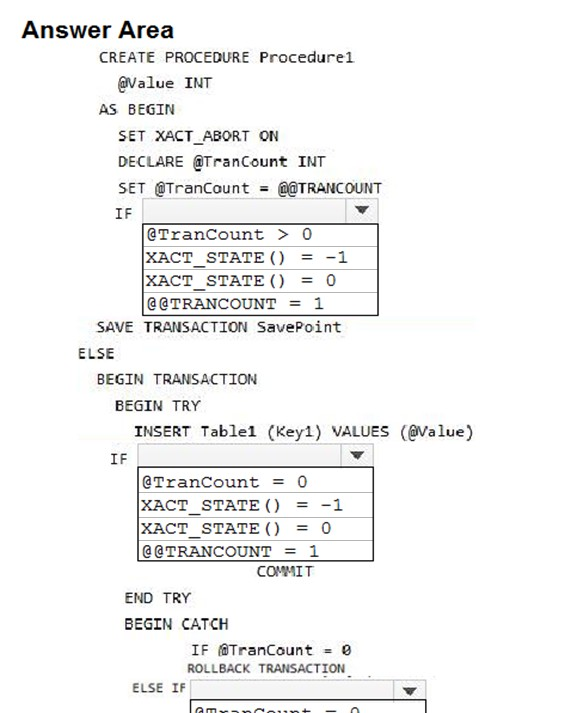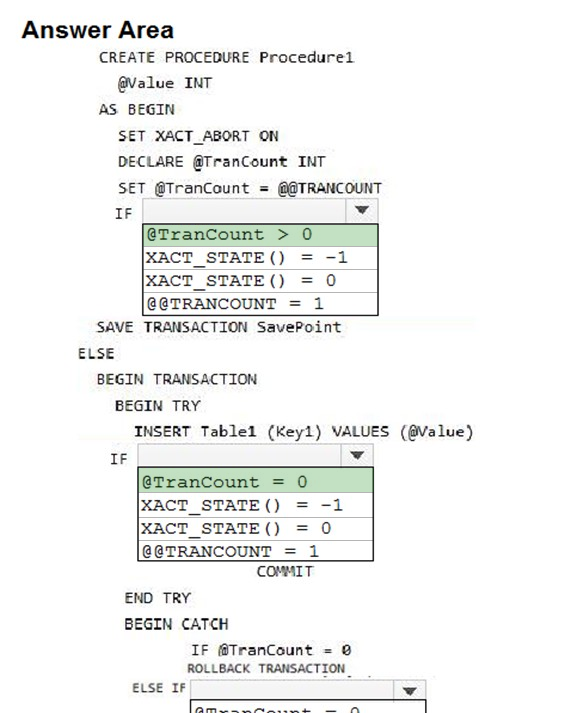

HOTSPOT -
You are developing a stored procedure with the following requirements:
✑ Accepts an integer as input and inserts the value into a table.
✑ Ensures new transactions are committed as part of the outer transactions.
✑ Preserves existing transactions if the transaction in the procedure fails.
✑ If the transaction in the procedure fails, rollback the transaction.
How should you complete the procedure? To answer, select the appropriate options in the answer area.
NOTE: Each correct selection is worth one point.
Hot Area:

Bartek
Highly Voted 5 years, 4 months agoRYP
5 years, 4 months agoJohnFan
5 years, 3 months agoFroze
5 years, 3 months agoNickname17
5 years, 2 months agoNickname17
5 years, 1 month agoNhiN
4 years, 5 months agoNhiN
4 years, 5 months agoNhiN
4 years, 5 months agoAndy7622
Most Recent 4 years, 5 months agoAlex5x
4 years, 7 months agoAmandaW
4 years, 7 months agomikebondzio
4 years, 9 months agostm22
4 years, 11 months agoraja1234567890
5 years, 1 month agoHoglet
5 years agoJohnFan
5 years, 3 months agoJohnFan
5 years, 3 months ago